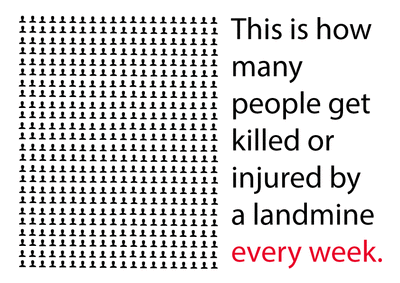Antipersonnel landmines are explosive devices designed to be detonated by the presence, proximity or contact of a person. Landmines can remain dangerous many years after a conflict has ended. They indiscriminately kill or injure civilians, aid workers, peacekeepers and soldiers alike. They pose a threat to the safety of civilians during conflicts and long afterwards. Landmines still daily kill or injure thousands of people every year in some 60 countries around the world.
What is the Ottawa Treaty?
A global movement to prohibit the use of landmines led to the 1997 Convention on the Prohibition of the Use, Stockpiling, Production and Transfer of Anti-Personnel Mines and on their Destruction (or simply the Mine Ban Treaty or Ottawa Treaty). Currently, a total of 162 nations are party to the Ottawa treaty.
Which nations have not signed the Ottawa Treaty?
To date, there are 162 states parties to the treaty. One state has signed but not ratified (The Marshall Islands) while 34 UN states including the United States, Russia and China are non-signatories, making a total of 35 United Nations states not party.
What remains to be done?
The International Campaign to Ban Landmines (ICBL) calls on states to destroy their stockpiles of antipersonnel landmines, and report on progress of stockpile destruction, in addition to reporting on planned and actual use of retained mines. Mines need to be cleared and victims need assistance. The ICBL supports individuals who want to hold a landmines conference, lobby decision-makers or organize a public event on landmines.
Sources: New Internationalist, ICBL
Disclaimer: My goal with this assignment on advocacy journalism was to figure out how to demonstrate and visualize the ongoing fatal issues with landmines and to let individuals know what they could do about it. The source I relied on for my animated gif claims that every 20 minutes someone gets killed or injured by a landmine, which is equal to about 500 a week. After creating the animated gif based on these numbers, I found other sources specifying lower numbers. In advocacy journalism, it seems important to avoid becoming the PR department of an NGO, especially if you think what they do is relevant. After finding conflicting numbers, I would—in real life—go back and change the animated gif and use the lower numbers from a seemingly more reliable source. It would still be shocking enough.

